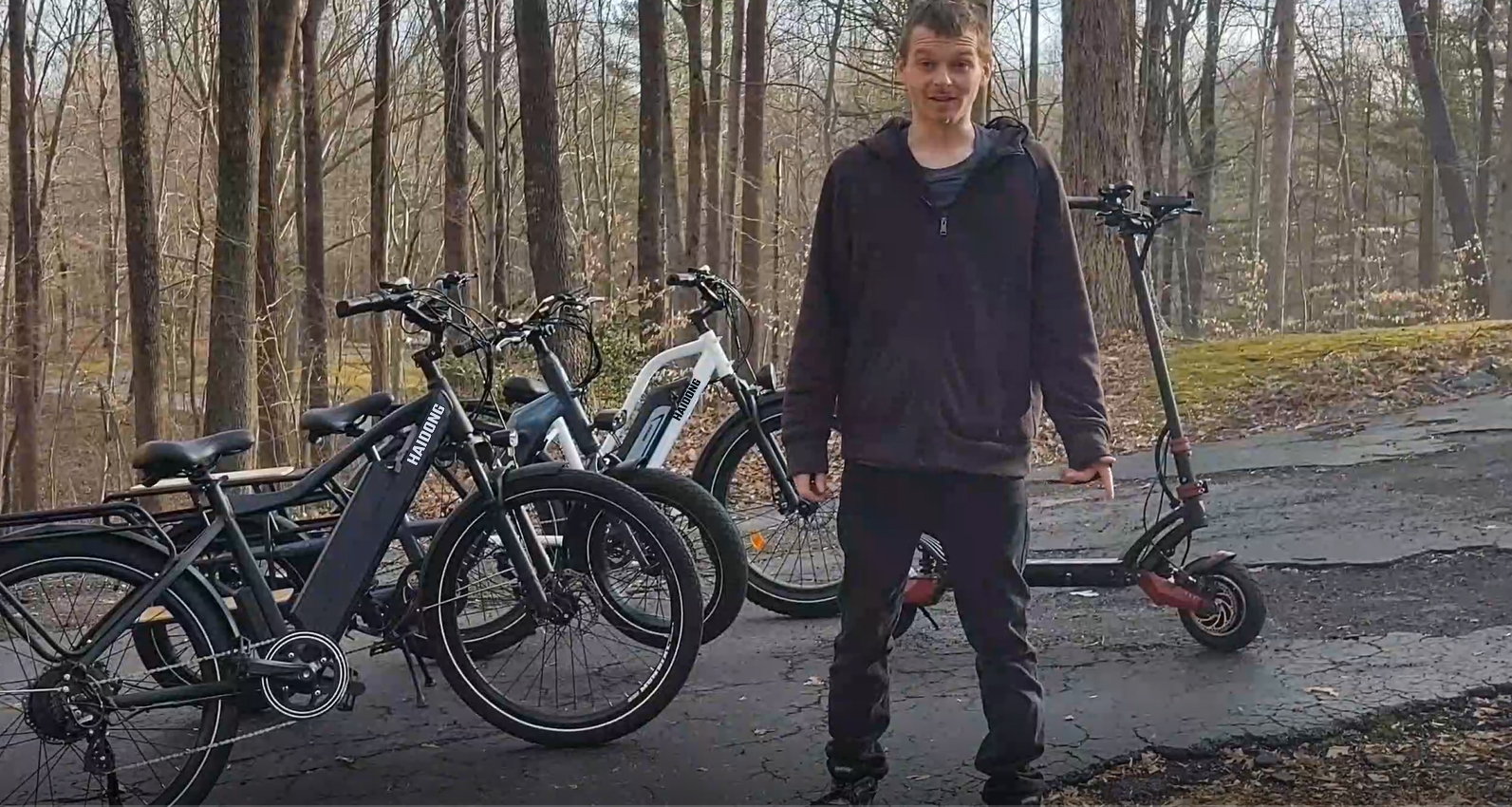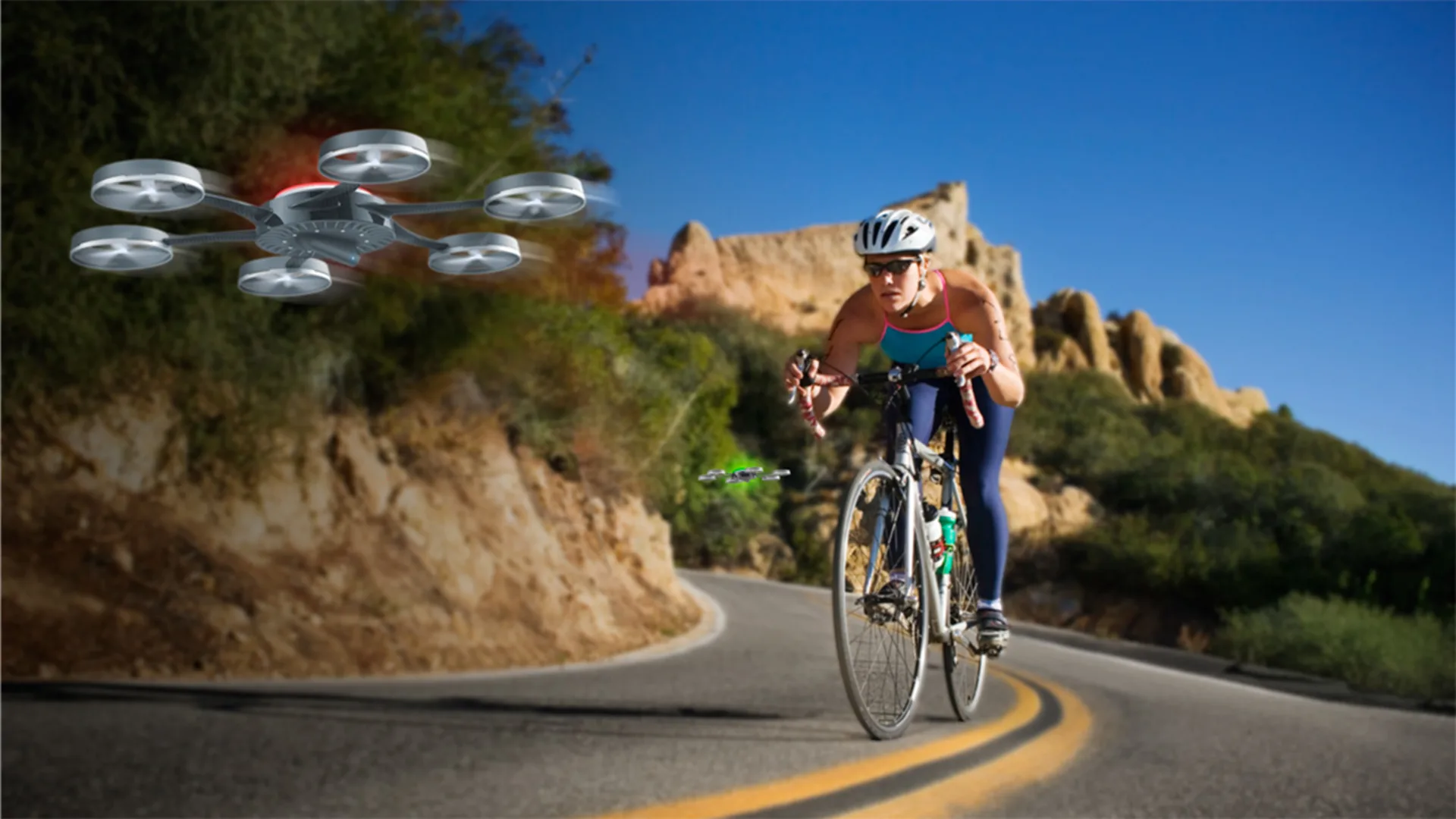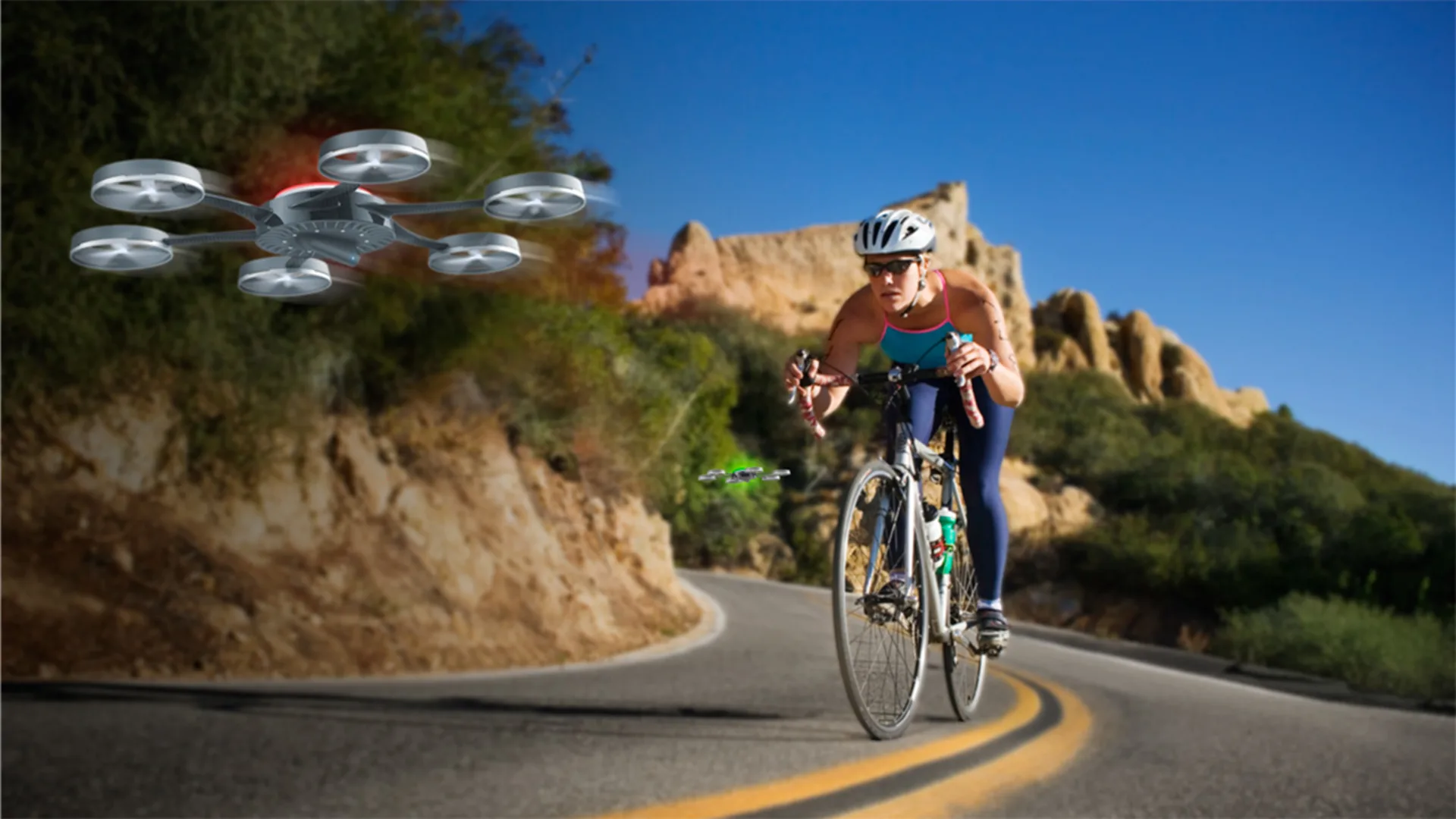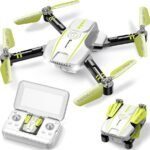Urban commuting has undergone a remarkable transformation over the years, shaped by both social dynamics and technological advancements. As cities expand and populations grow, the challenges of commuting – traffic congestion, pollution, and inefficient transportation systems – have become more pronounced. But instead of merely adapting to these issues, we’ve seen innovative solutions emerge that redefine how we navigate our urban landscapes.
The Evolution of Urban Commuting
Think about your daily commute for a moment. Have you ever found yourself stuck in a never-ending traffic jam? You’re not alone. Many people have similar experiences, often spending hours each week stuck in congested roads. This scenario represents a common urban plight that has evolved through the decades:
- Horse-drawn carts were the norm in the early days of urban transportation, which, while charming, didn’t quite cut it for efficiency.
- Trains, buses, and subways gradually began to dominate the scene, helping to usher in an era of mass transit that allowed for quicker and more organized commuting.
- In recent decades, personal vehicles have come to rule the road, providing individuals the freedom to travel but often leading to overcrowding and environmental concerns.
Today, as commuting styles evolve, multicmodal options such as electric bikes, scooters, and ridesharing services have started to emerge in urban centers. These modes offer a blend of convenience and flexibility, catering to diverse commuting needs. Cities are also starting to prioritize pedestrian-friendly initiatives, promoting walking and integration of green spaces into the urban fabric. The shift toward more active transportation options is much needed, considering that the World Health Organization reports that urban air pollution causes millions of premature deaths each year. There is a growing recognition that rethinking urban commuting is not just a matter of convenience; it’s essential for public health, environmental sustainability, and economic vitality.
Advancements in Transportation Technology
As urban commuting has evolved, so too has the technology that powers it. Numerous advancements, especially in the last decade, have considerably enhanced our commuting experience. While you might recall a time when navigation meant flipping through a physical map, we now have apps and GPS systems that make it possible to navigate complex city landscapes with ease. Here are some key advancements:
- GPS and Mapping Technology:
- Real-time traffic updates help users avoid congestion and choose optimal routes.
- Mapping services suggest multimodal routes, integrating various transport options like buses, trains, and biking.
- Electric Vehicles (EVs):
- Electric cars are becoming more mainstream and contribute to reducing carbon emissions.
- Many cities are accommodating EVs by creating dedicated charging infrastructure.
- Personal Mobility Devices:
- Electric scooters and bikes have entered the scene as affordable, flexible methods of transportation.
- Dockless bike-share programs allow easy access to bicycles without complicated rental processes.
- Smart Transit Systems:
- Public transportation systems are integrating technology to provide real-time vehicle tracking and updates.
- Smart ticketing solutions have made it easier and faster to pay for fares, eliminating the need for cash or physical tickets.
- Automation and Drones:
- The concept of drone technology is on the verge of revolutionizing urban commuting.
- While still largely in development, the integration of drones with bicycles presents a fascinating frontier that could potentially ease congestion and boost efficiency in commuting.
With cities racing towards modernization, the blend of new technologies with transportation presents opportunities for improved access, convenience, and sustainability. Many of these advancements align with the growing movement towards smart city concepts, emphasizing efficiency, connectivity, and eco-friendliness. As you contemplate the future of commuting, consider how far we’ve come from the days of horse-drawn carriages. The urban landscape continues to shift, and it’s your participation — whether through embracing electric bicycles, joining a ridesharing service, or pushing for smarter public transit solutions — that will shape tomorrow’s commuting environment. These advancements are not just about technological convenience; they’re about making our urban spaces more livable and accessible. The future of urban commuting is exciting, and you’re right in the middle of it, whether you’re aware of it or not. In the upcoming sections, we will delve into an innovative concept that promises to redefine the urban commute once more: drone-assisted bicycles. We’ll explore how this cutting-edge integration could change the game for urban commuting, tackling the persistent issues of traffic and pollution while making our cities smarter and more connected. Stay tuned!

As we move further into the fascinating realm of urban commuting, the concept of drone-assisted bicycles emerges as a revolutionary solution that combines the best of both worlds: the convenience of bicycles with the agility of drones. This innovative integration has the potential to change how you and countless others navigate urban environments, making commutes faster, smarter, and more efficient.
Overview of Drone Technology
At its core, drone technology has advanced significantly, evolving from simple models used primarily for aerial photography and recreation into sophisticated unmanned aerial vehicles (UAVs) that can serve numerous functions. While you may associate drones with tourism or entertainment, their application in transportation is where things get incredibly exciting.
- Autonomous Navigation: Modern drones come equipped with various sensors and cameras that allow them to navigate through urban landscapes seamlessly. These sensors help avoid obstacles and enhance safety while flying.
- Payload Capacity: Drones can carry a surprising amount of weight, enabling them to transport packages, supplies, or even assist in logistics. For example, some companies are already experimenting with drone delivery services for food and medical supplies, proving valuable in congested areas.
- Real-Time Data: Drones can be integrated with systems that collect real-time data on traffic conditions, weather, and other variables. This capability could help make informed decisions during your commuting journey.
- Scalability: With advancements in manufacturing and drone tech becoming more affordable, we may soon see more widespread adoption of these machines in various sectors, including urban commuting.
By pairing these strengths with bicycles, a somewhat traditional mode of transport, we can create a synergy that addresses the need for efficient, eco-friendly commuting solutions.
Integration with Bicycles for Urban Commuting
Now, imagine taking a bicycle that you’ve grown accustomed to cycling around the urban landscape and adding drone technology into the mix. Sounds futuristic, right? Yet, this merging of tech and traditional transport can offer significant benefits:
- Delivery and Commuting Hybrid: Picture yourself biking downtown while your drone follows close behind, efficiently carrying items like groceries or work materials. This practical application enables you to combine transportation and delivery seamlessly.
- Traffic Reduction: With drones capable of transporting lightweight packages and small items, fewer delivery vehicles will contribute to less congestion on the roads. You’d be left with clearer streets and a more pleasant cycling experience.
- Aerial Assistance for Navigation: The drone can act as your navigation assistant! Imagine it guiding you around traffic snarls or helping you locate the fastest bike routes. Real-time aerial information would empower you to make smarter decisions on the fly.
- Social Connectivity and Safety: If deployed widely, drone-assisted bicycles could help foster communities of cyclists with shared interests. Consider the potential for social events and meetups that can be organized using integrated apps. Moreover, drones can help improve safety by monitoring traffic conditions in real-time and alerting cyclists of any hazards.
- Sustainable Commuting: Drones are typically powered by rechargeable batteries, and when paired with bicycles, they promote a greener method of transportation. Incorporating drone technology into cycling can significantly reduce carbon footprints, making urban commuting much more eco-friendly.
As ground-level congestion continues to escalate, the skies above urban areas become increasingly underutilized. The launch of drone-assisted bicycles may well be the key to unlocking that space. Drones can take advantage of aerial routes, breaking free from the limitations of busy streets. However, practical applications and developments are still in the early stages. Tests and pilot programs are springing up in various urban areas, allowing innovators to fine-tune the concept. For example, some cities are already making strides by enabling designated aerial pathways for drones, ensuring they can operate without disrupting air traffic or causing safety issues. The beauty of drone-assisted bicycles lies in their potential to disrupt the traditional commuting model while making it easier for you to traverse the complexities of urban environments. While full-scale implementation may still be a few years away, the groundwork for this vibrant future is being laid right now. Imagine cycling through your city with a trusty drone companion by your side; it’s not just a pipedream – it’s an impending reality that could redefine urban commuting as we know it. As we continue to explore this exciting frontier, it’s clear that innovation in transportation has only just begun. The next logical step is to delve into the myriad benefits that drone-assisted bicycles can offer, and how they can contribute to a brighter, more sustainable future. Stay tuned for more!

As we dive deeper into the potential of drone-assisted bicycles, it’s exciting to consider the multitude of benefits they promise. This innovative marriage of biking and drone technology is set to provide solutions to some of the most pressing challenges of urban commuting. Let’s explore how these advancements could improve traffic flow and shine as an eco-friendly transportation alternative.
Improved Traffic Flow
Ah, traffic – the bane of urban life! If you’ve ever been stuck in gridlock, you know just how frustrating it can be when all you want is to reach your destination. Here’s where drone-assisted bicycles can be a game-changer, altering the very landscape of how we think about commuting.
- Drones to the Rescue: Imagine this scenario – a drone hovers above you, scouting the traffic conditions and relaying vital information back to your bicycle’s navigation system. It can guide you around congested intersections or suggest alternative routes that you might not have considered. This real-time input can be instrumental in reducing travel times significantly.
- Less Road Clutter: One of the most appealing aspects of drones is their ability to carry lightweight packages. With drones handling deliveries from local shops or restaurants, the need for delivery trucks and vans to crowd the roads diminishes. This shift means less congestion – picture open streets and a smoother ride for you as a cyclist!
- Encouragement to Cycle More: When people hear about the perks of utilizing drones alongside bicycles, it may inspire them to leave their cars at home. As bicycle usage increases, this can lead to a marked decrease in the number of vehicles on the road, thereby alleviating overall traffic pressure. More bicycles mean a healthier community and a dedication to more active transportation choices.
- Enhanced Public Transportation: Integrating drone-assisted bicycles with existing public transportation systems can lead to improved connectivity. Think about it – you take a train part of the way and then hop on your bike, with your drone delivering your groceries along the way. This seamless integration helps maximize public transit efficiency, allowing for a more interconnected urban environment.
Ultimately, the introduction of drones into the biking world has the potential to reduce not just the time you spend commuting but also the level of frustration associated with urban traffic.
Eco-Friendly Transportation Solution
As a planet-conscious individual, the concept of eco-friendly transportation is probably high on your list of concerns. It’s heartening to know that drone-assisted bicycles are not just convenient but can also play a significant role in reducing your environmental footprint. Let’s examine how:
- Lower Carbon Emissions: By riding a bike, you’re already on a greener path compared to driving a gas-powered vehicle. Drones, which are predominantly electric, further reduce your carbon emissions. Combined, this duo creates an efficient and sustainable transport solution without burning fossil fuels.
- Reduced Traffic Congestion and Pollution: As more people adopt drone-assisted bicycles, the number of cars on the road is likely to decrease. Fewer cars mean lower emissions of harmful pollutants, leading to cleaner air and a healthier urban environment. The potential for a significant reduction in air pollution is powerful! A cleaner atmosphere can lead to fewer respiratory issues for city dwellers, making it a win-win situation.
- Promoting Sustainable Urban Development: Cities today are focusing on sustainable initiatives, favoring infrastructure that encourages greener transportation. As cities embrace drone-assisted solutions, they pave the way for smarter urban planning. Futures may include dedicated bike lanes and drone pathways, enhancing the overall urban landscape while keeping eco-friendliness at the forefront.
- Greater Energy Efficiency: Electric bicycles already boast impressive energy efficiency. Add in the complementary use of drones, and you have a duo that maximizes energy use at minimal environmental cost. Drones can recharge using solar energy or renewable sources – further promoting sustainability.
- Community-Driven Initiatives: Transitioning to a drone-assisted cycling culture allows communities to engage in eco-friendly initiatives like local bike-sharing programs. These programs can encourage residents to utilize bicycles more frequently, leading to less vehicular reliance.
By embracing drone-assisted bicycles, you align yourself with a forward-thinking, environmentally-conscious movement. Not only are you taking control of your commuting experience, but you’re also contributing to a cleaner world for future generations. As the excitement around this innovative transport solution builds, it’s clear that the benefits of improved traffic flow and eco-friendliness are just the beginning. In the upcoming sections, we will tackle some of the challenges in implementing these wheels of change, ensuring we’re prepared for the road ahead. Buckle up as we navigate through the complexities that lie within this thrilling world of urban commuting!

As we dive into the world of drone-assisted bicycles, the excitement around their potential is palpable. However, while the advantages of this innovative transport solution are compelling, it’s essential to address the real-world challenges that come with their implementation. Two of the most pressing obstacles to consider are regulatory issues and safety concerns. Each plays a crucial role in shaping the path forward for making this futuristic commuting method a reality.
Regulatory Issues
Navigating through the complex maze of regulations is never easy, especially when it comes to integrating new technology into already established systems. The regulation of drone technology and bicycles involves multiple facets:
- Airspace Regulations: One of the primary hurdles is the need for comprehensive rules governing drone flights in urban areas. Unlike traditional bicycles, drones operate in airspace that is heavily regulated.
- Certification and Licensing: Authorities may require drone operators to obtain specific certifications or licenses to ensure their proficiency and compliance with airspace laws.
- No-Fly Zones: Determining which areas can host drone activity—such as busy streets, residential zones, and near airports—will necessitate careful planning.
- Integration with Existing Transportation Laws: The changing requirements will require coordination between bicycle laws and drone regulations, creating a synergy that promotes safety and efficiency. This could involve:
- Revising traffic codes to accommodate drone-assisted bicycles on the roads.
- Creating guidelines for user behavior around shared drone-bicycle technology.
- Liability and Insurance: With the interaction of different modes of transport, questions regarding liability in case of accidents or damages become pertinent.
- There will need to be a framework in place to determine who is liable if a drone causes an accident or if a cyclist is injured due to drone malfunctioning.
- Adequate insurance models will need to be devised, addressing both bike and drone components.
- Environmental Regulations: Depending on the technology used, local governing bodies may need to evaluate any ecological impacts associated with deploying drones in urban environments.
- For instance, considerations regarding noise pollution, wildlife interactions, and energy consumption are essential.
As regulations are proposed, updated, and implemented, time is of the essence. It could take several years for all requisite regulatory frameworks to come into place.
Safety Concerns
While the benefits of drone-assisted bicycles are enticing, the aspect of safety looms large and cannot be ignored. Concerns arise not just for the riders but for pedestrians and other vehicles sharing the road. Let’s delve deeper into some key safety considerations:
- Collision Risks: With drones operating in the air, the potential for aerial collisions does exist. There’s the risk of a drone colliding with a cyclist or even a pedestrian.
- Obstacle Detection: Advanced technology can play a role in reducing collision risks. Drones equipped with smart sensors can help monitor their surroundings and avoid obstacles.
- Controlled Air Corridors: Creating designated flying lanes for drones can prevent aerial traffic from interfering with ground-level commuters.
- User Experience and Skill Levels: The transition to using a drone-assisted bicycle may require a learning curve, especially for those who may be less technologically savvy.
- Providing adequate training and education, perhaps even certification programs for users, will be vital. Knowing how to operate drones safely while cycling is key to ensuring a smooth experience.
- Incorporating intuitive controls and making drones seamlessly integrate with existing biking tech could ease anxiety and reduce learning hurdles.
- Public Perception and Acceptance: If drone-assisted bicycles are to flourish, public perception must be taken into account. The sight of drones buzzing around could raise alarm for some, leading to resistance.
- Holding community workshops or forums to explain the technology and its safety measures could build trust and alleviate fears.
- Highlighting successful pilot projects and sharing experiences can encourage adoption.
- Legal Liability in Accidents: As previously mentioned, shared usage brings about questions of liability. This concern can create hesitation among potential users, fearing for their safety if mishaps occur.
- Establishing clear accountability frameworks will help users feel more secure in embracing this new technology.
- Vulnerability to Malfunction or Hacking: Like any tech, drones can fail or may be susceptible to cyber threats. If a drone malfunctions while in transit, it can lead to severe danger for both the cyclist and those around them.
- Advanced security measures and fail-safes will need to be integrated into drone technology to combat hacking and ensure overall reliability.
In sum, while the vision of drone-assisted bicycles can resonate deeply with urban dwellers, it’s crucial to recognize the complexities inherent in its implementation. As regulations evolve and safety standards are clarified, a balanced approach will help pave the way for this innovative solution to thrive. As we look ahead, the key will be addressing these challenges head-on. Your role as a commuter becomes instrumental in advocating for sensible regulations and embracing safety measures, supporting the progression of this transformative commuting method. Let’s keep the conversation going as we dive into real-world case studies showcasing drone-assisted bicycle initiatives, providing tangible insights into their impact. Stay with us!

As we explore the future potential of drone-assisted bicycles, it’s important to look at real-world implementations that are already setting the stage for this innovative transportation method. Various urban areas across the globe are taking pioneering steps to incorporate drone technology along with traditional biking. These case studies not only highlight how far we’ve come but also illuminate the benefits that drone-assisted bicycles can bring to both commuters and the environment.
Urban Areas Leading the Way
Several cities are at the forefront of experimenting with drone-assisted bicycles, showing how this combination can reshape urban commuting. Let’s take a look at a couple of standout examples:
- San Francisco, California:
- Known for its tech-savvy environment, San Francisco is challenging the status quo with a drone delivery pilot program that integrates with e-bike services.
- In this initiative, drones help deliver food and medical supplies to businesses and residents in difficult-to-access areas – particularly useful in reducing deliveries from larger vehicles.
- Commuters can rent e-bikes integrated with drone technology, making it easier for them to not just travel but also have their packages delivered as they ride.
- Dubai, United Arab Emirates:
- Dubai has endeavored to be a smart city leader, and its commitment to drone-assisted bicycles is no exception.
- With initiatives like “Dubai Bike,” the city combines cycling paths with drone services, allowing for real-time package deliveries overhead as cyclists make their way through the urban landscape.
- The city has even envisioned fleets of drones that can deliver items ranging from paperwork to groceries while users enjoy smooth and eco-friendly cycling experiences.
- Amsterdam, Netherlands:
- Amsterdam is synonymous with cycling culture, and here, project trials have begun to explore the integration of drones for last-mile delivery to cyclists.
- This city, famous for its cycling infrastructure, can benefit from reduced congestion by allowing drones to carry items from local shops directly to bikers, creating a more fluid flow of traffic.
These pioneering cities are not only showcasing how drone-assisted bicycles can coexist with existing transportation systems—they’re also proving that such integrations can reduce burdens on infrastructure while enhancing the user experience.
Impact on Commuters and the Environment
By analyzing these initiatives, it becomes evident that there are profound impacts on both commuters and the environment. Let’s delve deeper into these benefits:
- Enhanced Commuter Experience:
- The integration of drone services allows cyclists to multitask. Picture yourself riding home from work while your drone handles a delivery, allowing you to enjoy your ride without the hassle of additional stops.
- This convenience means less time spent commuting and more time spent on the things that matter, from leisure activities to family time. Flexibility in your schedule can significantly enhance your quality of life.
- Decreased Traffic Congestion:
- With drones conducting deliveries, fewer delivery trucks clog city streets, easing traffic woes. You can breathe a little easier as you pedal past streets that are less congested.
- Studies from drone delivery pilots indicate reductions in delivery vehicle miles traveled; this leads to fewer emissions and more space on the road for cyclists.
- Environmental Benefits:
- Primarily electric-powered, drones generate far fewer emissions compared to traditional delivery trucks or vans. By combining this with bicycle transport, you support a more sustainable urban ecosystem.
- With reduced reliance on fossil fuels, cities that adopt drone-assisted bicycles contribute positively to improved air quality and overall environmental health.
- Community Engagement:
- Many drone-assisted bicycle initiatives involve local businesses, fostering a sense of community as they collaborate to promote sustainability.
- Bike shops, restaurants, and grocery stores can benefit from the increased foot and bike traffic, helping to bolster the local economy.
- Data-driven Insights:
- Various pilot programs yield valuable data on commuting patterns, environmental impacts, and user preferences.
- Analyzing this information enables urban planners and policymakers to refine and improve infrastructure and regulations regarding both bike paths and drone operations.
The impact of drone-assisted bicycles goes beyond convenience; they pave the way for smarter and more sustainable urban commuting experiences. These case studies serve as powerful demonstrations of how being forward-thinking can lead to transformative approaches that benefit both commuters and the environment. As we conclude this exploration into urban initiatives and their impacts, it becomes clear that the dream of drone-assisted bicycles seamlessly merging with city life is more than just a fantastical idea. Instead, it’s a burgeoning reality in places leading the charge. As you consider the future of urban commuting, remember that every pedal stroke towards this new age contributes to a collective shift towards smarter, greener transportation. Looking ahead, we’ll dig into the potential advancements in drone technology that may shape the future of this fascinating convergence. Stay with us as we continue this journey toward a transformative commuting experience!

Having explored the vibrant case studies of drone-assisted bicycle initiatives and their positive impact, it’s now time to look toward the future. The excitement surrounding these technologies hints at a world where drones and bicycles work harmoniously, creating a more efficient and enjoyable urban commuting experience. Tree branches in bloom, sun shining down—imagine yourself zipping around town, a drone trailing behind, ready to assist wherever needed. Let’s delve into the tantalizing possibilities ahead!
Potential Advancements in Drone Technology
Drones have come a long way, but they’re just getting started. As advancements continue to unfold, the integration of drones with bicycles may become even more innovative and transformative. Here are some potential advancements we can anticipate:
- Enhanced Autonomous Navigation:
- Current technology is solid, but imagine drones equipped with AI capable of recognizing and adapting to dynamic urban landscapes in real time—allowing them to optimize flight paths on-the-fly.
- This could mean seamless route adjustments based on changes in traffic or weather conditions, further enhancing safety and efficiency.
- Improved Battery Life and Charging Solutions:
- Ongoing research into lightweight battery technology could significantly extend drone operational time, meaning they can cover longer distances and service more customers without needing constant recharges.
- We might even see solar-powered drones or wireless charging stations integrated into existing bike-sharing infrastructure, enhancing convenience for users on the go.
- Drone-to-Drone Communication:
- Future drones could communicate with each other to create a fleet system, coordinating their movements to avoid mid-air collisions, predict traffic patterns, and streamline deliveries.
- By analyzing real-time data from multiple drones, city planners could gain actionable insights to further improve urban mobility strategies.
- Personalized User Experience:
- Drones may feature advanced UI/UX designs, where cycling enthusiasts can customize their experience—whether that’s choosing which items to carry or setting delivery preferences.
- Imagine your drone delivering fresh coffee to your office just as you finish that busy morning commute!
- Health Monitoring and Emergency Services:
- As drones advance, they could even serve as emergency responders, delivering medical supplies quickly or checking vital stats for cyclists in distress, bridging the gap in service for health-focused commuting.
These potential advancements represent a future where drone technology not only enhances convenience but also prioritizes safety and sustainability.
Integration with Public Transportation Systems
The fusion of drone-assisted bicycles with public transportation systems holds immense promise for revolutionizing urban mobility. By connecting these two modes of transport, cities can create a seamless commuting experience. Let’s explore some exciting possibilities:
- Coordinated Transport Hubs:
- Imagine urban centers designed around multi-modal transport hubs where you could easily switch from bikes to drones to public transit. A user-friendly app could help manage and coordinate all these movements, facilitating effortless transitions.
- Such hubs could include dedicated docking stations where drones could drop off materials while cyclists pick up items—all in one efficient location.
- Last-Mile Solutions:
- Drone-assisted bicycles could serve as the perfect last-mile solution from public transportation stops to your final destination.
- If you find yourself at a train station and need to get to an office or residence a few miles away, your drone can deliver your package or supplies while you ride, combining personalized service with sustained mobility.
- Benefit of Reduced Congestion:
- By integrating drones with public transport networks, cities could handle commuter loads during peak times more effectively. This integration could lead to fewer cars on the streets and reduced reliance on traditional delivery methods.
- Fewer delivery trucks mean fewer emissions and less wear on infrastructure, positively impacting air quality and enhancing public well-being.
- Real-Time Data Sharing:
- Public transportation systems equipped with data-sharing capabilities can communicate with drone operations, helping to optimize travel routes based on live conditions. Such cooperation can lead to improved service reliability.
- Riders would benefit from knowing exactly how long they need to wait – whether for a bus or their drone—leading to smoother, stress-free commutes.
- Collaborative Partnerships:
- Cities could partner with private companies that specialize in drone technology, paving the way for pilot programs that trial various integration possibilities.
- Community engagement initiatives could help gather feedback, ensuring the systems developed are truly in line with public needs and expectations.
As we look to the horizon, the amalgamation of drone technology and public transit presents an exhilarating vision of integrated urban mobility. It’s a future where commuting is not just a task but an experience—one that is personalized, globally conscientious, and environmentally friendly. In closing this exploration of future possibilities, one cannot help but feel a surge of anticipation. The trajectory toward and through drone-assisted bicycles carries with it the promise of a smarter, cleaner urban landscape that benefits all. Your everyday commute might just evolve into a cutting-edge experience you’d never dreamt of! Stay engaged and curious as we continue to witness these technological advancements unfold. After all, every great change begins with the bold commitment to embrace the future!



